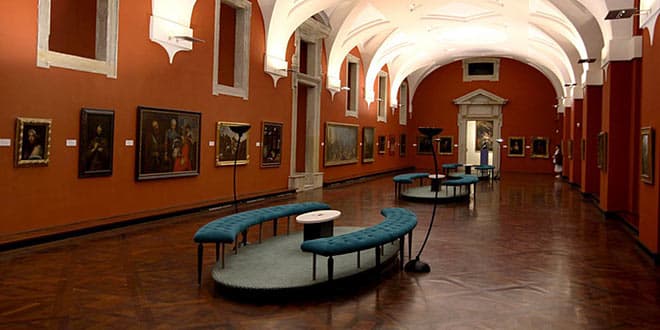The collection of Prague Castle Gallery is housed in the beautiful Renaissance stables at the northern end of the Second Courtyard. It contains around 400 paintings and drawings from 16th- to 18th- century European Art. These paintings have been carefully selected from about 4,000 that are currently in possession of Prague Castle. A few works have survived from the legendary collection of Rudolph II, but most were lost as spoils of war during the 17th century, moved to Vienna or sold – either to the Saxons or in the ‘Josephine’ auction of 1782. The following are regarded as the most valuable paintings in the collection: Titian’s Toilet of a Young Lady, Tintoretto’s Flagellation of Christ and Rubens’s The Assembly of the Olympic Gods. There are other major works by great artists including Hans von Aachen, Domenico Fetti, Bartolomeo Spranger, Paolo Veronese and Jacopo Bassano. Gallery II holds temporary exhibitions and has a small permanent exhibition of pieces from the reign of Rudolph II. Czech art is represented by artists of the Baroque period by Kupecký and Brandt.

Location: Obrazárna Pražského hradu, Prague Castle Second Courtyard
Admission: 100 CZK
Open: daily 10am-6pm.




Since visiting this gallery, I have been very curious about a painting by Johannes Sanders van Hemessen in 1540. It is called The Weeping Bride, and is a close up of three peoples’ faces. On the left of the image is a snidely grinning older bald man, with his arms around the right biceps of the weeping bride. The bride is sobbing, with mucus running down from her nose, with her hands folded in a beseeching manner. I am fairly sure she is a man, dressed as a woman (hair on chest, rough features, prominent Adam’s apple). On her left (the right side of the painting) is a clueless young man looking across the bride’s face, beyond her. He is holding a jug and seems uninterested in the bride’s distress.
It must be popular because the gift store had a postcard of it, but the postcard has no additional information about the painting’s images. I can’t read Czech, and don’t know anyone to ask about it. I cannot find anything about it on the web. Can you tell me more about it in English?
What kind of story is this portraying? Is it a biblical story or a Flemish folk story? Was the artist telling a fable or a moralistic story? Any information you can share about this painting’s story and images would be very welcomed. Thank you.